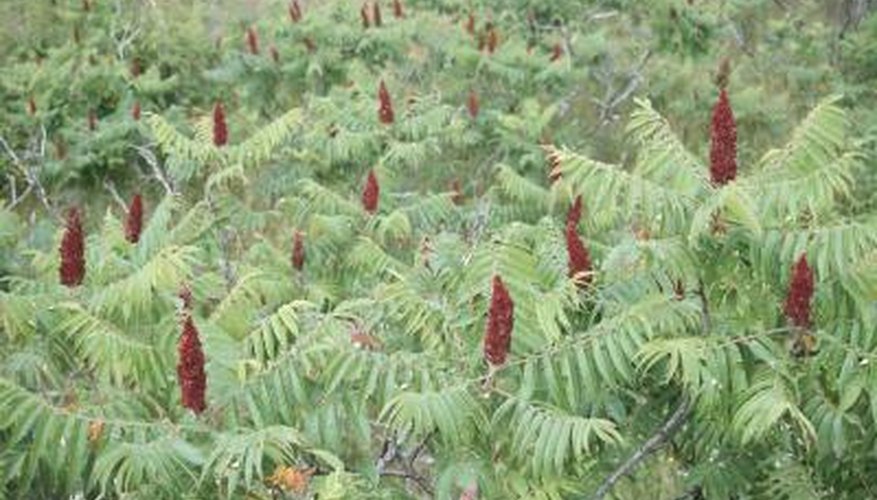Sumac trees (Rhus spp.) require annual pruning to control their size and shape. If left to nature's devices, these trees would grow quite shrubby and overgrown. With a sprawl equal to and sometimes greater than the height, sumacs require enough room to grow, or hard pruning to keep them in their place.
Time frame
Gardeners should prune these trees in late winter or early spring, while the sumac tree remains dormant. Most trees get pruned at this time, except those that have showy spring flowers grown on old growth, where pruning would reduce the flower display. Sumac is not one of these trees. Dormant-season pruning makes it easier to identify branches that need trimming.
- Gardeners should prune these trees in late winter or early spring, while the sumac tree remains dormant.
- Most trees get pruned at this time, except those that have showy spring flowers grown on old growth, where pruning would reduce the flower display.
Mature size
The tallest sumac trees can reach above 18 m (60 feet). Most trees average 4.5 to 7.5 m (15 to 25 feet) in height, with a similar width. To control the spread of sumacs, many trees are pruned down to the ground. This can happen annually, as staghorn sumac (Rhus typhina), or every few years, as for fragrant sumac (Rhus aromatic).
- The tallest sumac trees can reach above 18 m (60 feet).
Technique
If you're cutting sumacs like staghorn or fragrant sumac down to the ground, cut all branches back to ground level. Use lopping pruners for growth up to 3.7 cm (1 1/2 inches) thick and a pruning saw for thicker growth. For other sumacs, remove suckers growing from the trunk and remove dead or broken branches. Cut this growth off at the base. Trim back long limbs to a desired height. Cut off branches that cross over other limbs, and those that grow vertically up and threaten to interfere with the tree structure.
- If you're cutting sumacs like staghorn or fragrant sumac down to the ground, cut all branches back to ground level.
- Cut off branches that cross over other limbs, and those that grow vertically up and threaten to interfere with the tree structure.
Tips
Sumac is a member of the Cashew family (Anacardiaceae), which also includes the mango tree and poison ivy. When pruning your sumac, wear thick garden gloves to protect your hands. Some sumacs emit a milky sap when pruned that can irritate the skin.
